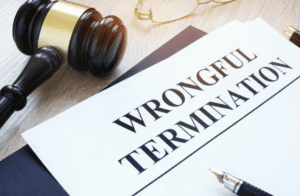 If you or a close family member is suffering from a serious health condition, you may want to ask for a leave from work under the federal Family and Medical Leave Act (FMLA). This law provides up to 12 weeks of unpaid leave within a 12-month time frame, which can be taken either in large blocks of time or in small amounts as needed.
If you or a close family member is suffering from a serious health condition, you may want to ask for a leave from work under the federal Family and Medical Leave Act (FMLA). This law provides up to 12 weeks of unpaid leave within a 12-month time frame, which can be taken either in large blocks of time or in small amounts as needed.
Whether you are eligible for FMLA leave depends on both you and your employer. You must have been working for your employer for at least 12 months, and you must have worked at least 1,250 hours in that time. Your employer must be either a private employer with 50 or more employees, a public agency, or a public or private elementary or secondary school.
The Department of Labor (DOL), which enforces the FMLA, provides a long list of requirements about what you must be told and when. Though this may not sound very exciting, if you end up in a legal dispute over FMLA leave and your employer failed to live up to these requirements, that could mean the difference between winning and losing your case.
A covered employer must take the following steps:
- provide general information about the FMLA to all employees,
- inform employees about their eligibility for FMLA leave or the reason they are ineligible,
- advise employees about their rights and responsibilities under the law, and
- notify employees whenever specific leave is designated as FMLA leave so that they can track their remaining amount of leave.
Table of Contents
ToggleGeneral Notice Requirements
 All employers covered by the FMLA must post a general notice informing employees of the law’s provisions. This notice must explain what the law is, describe who qualifies for its benefits, and outline the employer’s responsibilities. The FMLA poster must be displayed in plain view of all workers, either in hard copy or electronically, even if no employees are actually eligible for leave. The general notice must also provide information about how to file a complaint with the DOL’s Wage and Hour Division if an employee thinks the law has been broken. If an employer willfully violates this posting requirement, it can be fined $110 for each offense.
All employers covered by the FMLA must post a general notice informing employees of the law’s provisions. This notice must explain what the law is, describe who qualifies for its benefits, and outline the employer’s responsibilities. The FMLA poster must be displayed in plain view of all workers, either in hard copy or electronically, even if no employees are actually eligible for leave. The general notice must also provide information about how to file a complaint with the DOL’s Wage and Hour Division if an employee thinks the law has been broken. If an employer willfully violates this posting requirement, it can be fined $110 for each offense.
If a covered employer has any FMLA-eligible employees, then it must also provide the same information from the notice poster separately to each employee. This information can be distributed in an employee handbook, if there is one. If not, the FMLA general notice must be provided either on paper or electronically to new employees when they’re hired.
For all notices, employers must be careful to provide information in a form that their employees can access. If a significant portion of the workforce is not literate in English, notices may need to be provided in other languages. Similarly, employers must comply with all federal and state requirements for providing accessible notices for blind individuals.
Eligibility Notice Requirements
The first time within any 12-month period that an employee takes leave that might qualify under FMLA, the employer must provide a notice of eligibility. That notice can be oral or written, but it must be provided promptly. The employer has five business days from either the first request for leave or the date the employer learns that the leave might qualify. The notice must inform the employee whether he or she is eligible for FMLA leave. If the employee is not eligible, the notice must give at least one reason for the ineligibility.
Each eligibility notice must be accompanied by a separate notice describing the employee’s rights and responsibilities and the consequences of failing to meet those required obligations. The employer must give this notice in writing. Among other things, the rights and responsibilities notice must advise the employee of the following items:
- when the employer’s 12-month period is for determining FMLA leave entitlement,
- whether the employee must obtain a certification from a health-care professional and the consequences of not getting such a certification,
- what he or she must do to maintain health insurance during FMLA leave, and
- what rights the employee has to return to work after FMLA leave.
To comply with the law, the employer also must answer employee questions about FMLA leave.
Designation Notice Requirements
An employee using FMLA leave must know how much time off has been designated as FMLA time to be able to calculate how much has been used and how much remains. The employer must therefore regularly designate leave as FMLA-qualifying and provide notice of that designation to the employee. Within five days of receiving enough information to make a determination, the employer must give a written designation notice advising the employee whether leave qualifies under FMLA.
The designation notice must inform the employee about how much leave has been designated as FMLA leave and therefore counts against the annual entitlement. If, at the time of the designation, the amount of leave taken is not yet known, the employer must do periodic accountings, but these are not required to be more often than once every 30 days. Sometimes an employer will need more information to make an eligibility determination about a specific leave request. In that case, the employer must ask, in writing, for additional information.
Damages for Failure to Provide Notice
An employer’s failure to follow these notice requirements may be considered a violation of the law, if the failure causes interference with or denial of an employee’s FMLA rights. Employers who fail to provide proper notice may be liable for the following:
- compensation and benefits lost due to the violation,
- actual monetary losses sustained as a direct result of the violation, and
- appropriate equitable or other relief, including employment, reinstatement, promotion, or any other relief specifically tailored to the harm done to the employee.
Summing It Up
The FMLA tries to balance the interests of employees and employers. The law attempts to avoid unduly burdening employers with unnecessary requirements—but employees can’t exercise their rights if they don’t know about them. Employees who are kept in the dark about decisions concerning their leave also cannot optimally manage their time off or balance their obligations to their family.
If you are requesting FMLA leave, be sure you take the following steps:
- communicate with your employer in writing and keep copies of all communications, including emails;
- take notes of any leave-related conversations and email a summary of your conversation to the person you talked with, stating your understanding of your status and the next steps; and
- carefully read any letters or memos you are given and compare them to the FMLA’s notice requirements.
If your FMLA leave request isn’t going as you hoped and you’re having problems, contact our office. We can discuss your situation, advise you about your legal rights, and help you understand what you can do to protect yourself.





